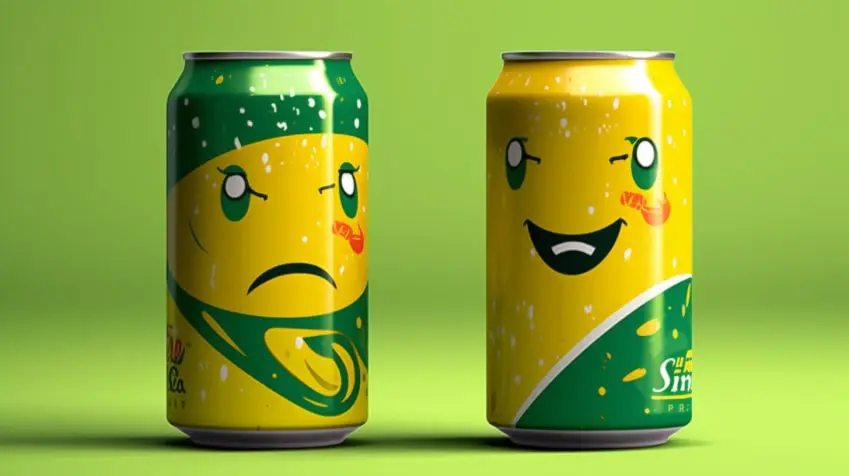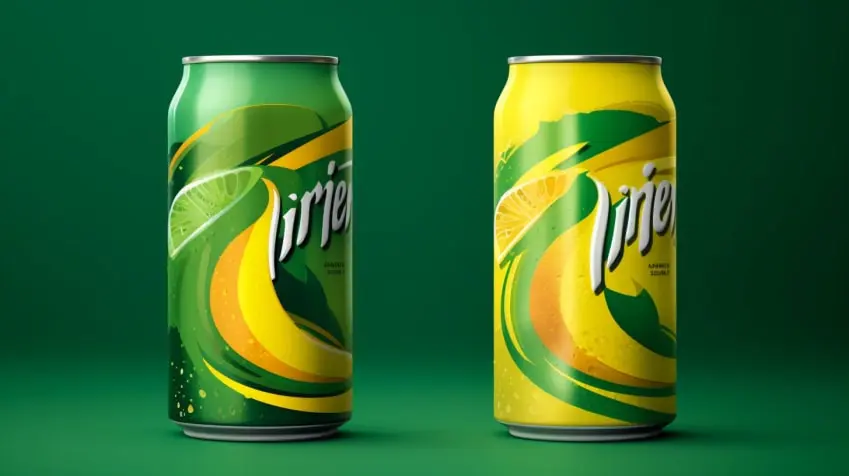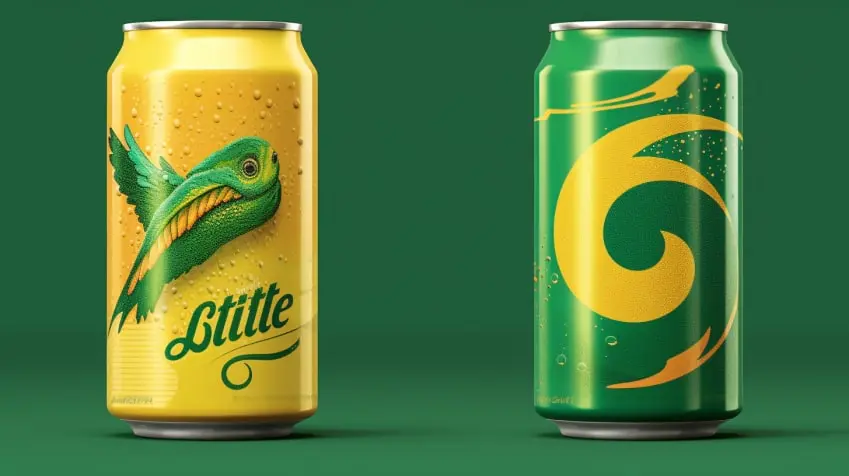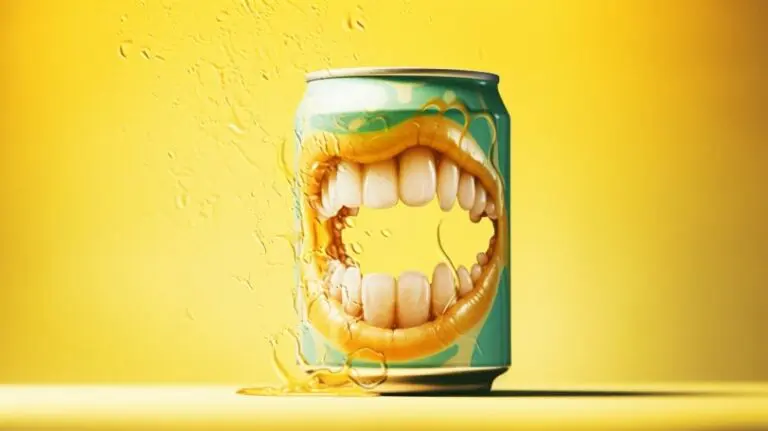Why Did Sprite Change Their Can?
In the world of marketing, companies are constantly adapting to changing consumer preferences and trends.
One such example is Sprite, a carbonated soft drink brand under the Coca-Cola Company.
Recently, Sprite underwent a significant redesign of its can, sparking questions among consumers as to why this change occurred.
On one hand, some may argue that a change in packaging design is insignificant and unnecessary.
However, on the other hand, others may view it as a strategic move by Coca-Cola to keep up with evolving consumer tastes and preferences.
This article explores the reasons behind Sprite’s can redesign and delves into the broader rebranding efforts of Coca-Cola.
Key Takeaways
- Sprite redesigned their can to better align with their youthful, energetic image, featuring a vibrant green color scheme and bold typography.
- Coca-Cola is also undergoing a rebranding initiative to appeal to a younger audience, with a focus on simplicity, personalization, and sustainability.
- Simplifying branding and creating personalized experiences are important strategies for increasing visibility and appealing to younger consumers in a competitive market.
- Sprite’s marketing strategies include using emotional appeal in packaging design, focusing on social media engagement, and innovating to stay relevant. Product innovation is also important for improving their offering.
The New Design of Sprite’s Can
The updated design of Sprite’s can features a vibrant green color scheme with bold, sans-serif typography and the iconic lemon-lime logo prominently displayed.
The new look is a departure from the previous can design which featured a more subdued color palette and script font. The updated design was implemented to better align with the brand’s youthful, energetic image.

Since its launch in 1961, Sprite has undergone several redesigns, each aimed at keeping up with changing consumer preferences and trends.
The latest update to the can design was met with mixed reactions from consumers.
While some appreciated the fresh look and modern feel of the new design, others expressed disappointment that the classic blue and silver color scheme had been abandoned.
Despite this initial reaction, it remains to be seen whether or not the updated can design will have a positive impact on sales for Sprite.
Coca-Cola’s Broader Rebranding Effort
Coca-Cola’s recent rebranding initiative aims to revitalize the company’s image and appeal to a younger audience.
The new logo and marketing strategy are part of a broader effort to modernize the brand and stay relevant in an increasingly crowded marketplace.
Here are some key elements of Coca-Cola’s rebranding efforts:

- Simplified branding: The new design emphasizes simplicity, with a focus on the iconic Coca-Cola logo and minimal text. This approach is intended to make the brand more recognizable and memorable.
- Emphasis on digital: In addition to traditional advertising channels, Coca-Cola is also investing heavily in digital marketing. This includes social media campaigns, influencer partnerships, and targeted ads aimed at specific demographics.
- Personalization: Another key aspect of Coca-Cola’s strategy is personalization. By offering customized products like named bottles or cans, the company hopes to create a stronger emotional connection with consumers.
- Sustainability: With increasing consumer concern about environmental issues, Coca-Cola has also made sustainability a priority in its branding efforts. This includes reducing plastic waste and promoting eco-friendly practices throughout the supply chain.
- Youthful appeal: Finally, much of Coca-Cola’s rebranding focuses on appealing to younger consumers. By emphasizing fun, creativity, and innovation across all aspects of its marketing campaign, the company hopes to capture the attention (and loyalty) of this key demographic.
The Importance of Keeping Up with Changing Consumer Preferences
Keeping up with evolving consumer preferences is essential for any brand to remain relevant and competitive in an ever-changing market landscape.
Personalization trends have become one of the most significant drivers of consumer behavior, with customers expecting brands to tailor their products and services to meet their unique needs.
As a result, companies that fail to adapt risk losing out on customer loyalty and market share.
Consumer behavior analysis has become increasingly important in understanding these changing preferences.

Brands that use data-driven insights to identify emerging trends and shifts in customer attitudes are better equipped to create personalized experiences that resonate with their target audience.
For example, by analyzing social media conversations, brands can gain valuable insights into what customers want and expect from them.
This information can then be used to inform product development, marketing campaigns, and overall brand strategy – all aimed at delivering more relevant offerings that meet the needs of today’s consumers.
Ultimately, staying ahead of these shifting preferences is critical for any company looking to build long-term success in today’s highly competitive market environment.
Appeal to Younger Consumers
Appealing to younger consumers has become a crucial factor for brands seeking to maintain relevance and secure future growth in an increasingly competitive market.
With the rise of digital marketing and social media outreach, companies have realized the importance of connecting with younger audiences through these platforms.
This shift in focus has led many brands to revamp their marketing strategies and even change their packaging design to attract younger consumers.

Sprite is one such brand that recently made changes to its can design in order to appeal to a younger demographic.
The new can features bold colors and graphics, which are more eye-catching than the previous design.
Additionally, Sprite has increased its social media presence by partnering with popular influencers on platforms like Instagram and TikTok. By doing so, they have been able to engage with younger audiences who may not have otherwise been familiar with the brand.
As companies continue to adapt to changing consumer preferences, it is likely we will see more emphasis placed on digital marketing and social media outreach as key components of successful branding strategies.
| Pros | Cons | ||
|---|---|---|---|
| Bold colors make product stand out on shelf | May not appeal as strongly to older audience | ||
| Partnership with influencers increases brand exposure | Risk of alienating loyal customers who prefer traditional packaging | ||
| Social media presence allows for direct engagement with young audience | Potential backlash if influencer partnerships are seen as insincere or disingenuous | However, with careful selection and genuine collaboration, influencer partnerships can be a valuable addition to a brand’s marketing strategy. |
The Role of Simplicity in Modern Branding
Simplicity has emerged as a key element in modern branding strategies, with companies prioritizing minimalistic designs and streamlined messaging to better resonate with consumers.
In an era where social media dominates the way people interact and consume brands, simplicity has become more important than ever.
Brands that can convey their message quickly and effectively are more likely to capture the attention of younger generations who have grown up in a fast-paced digital world.
The minimalist approach is particularly popular among younger consumers who value authenticity and transparency.

By simplifying their brand identity, companies can communicate their values in a clear and concise manner, which helps build trust with consumers.
This trend is evident in Sprite’s recent redesign of its can, which features a cleaner look that removes unnecessary elements from the design.
With its updated packaging, Sprite hopes to appeal to younger audiences who prioritize simplicity over cluttered designs.
Ultimately, embracing simplicity as part of modern branding strategies is crucial for companies looking to stay relevant and connect with today’s consumer base.
Eye-Catching Graphics for Increased Visibility
In today’s competitive market, creating eye-catching graphics has become essential for companies to increase their visibility and stand out from the crowd.
This is particularly true in the beverage industry, where packaging trends are constantly evolving and consumers have a vast array of options to choose from.
To create effective graphics, companies must consider color psychology – the study of how colors affect human behavior and emotion.

Here are three ways that color psychology can be used to create eye-catching graphics for increased visibility:
- Use bold, contrasting colors: Bold and contrasting colors catch the eye quickly and are more likely to be noticed than muted or similar hues.
- Incorporate familiar color schemes: Using well-known color schemes can help brands establish recognition with customers.
- Consider cultural associations: Different cultures associate different emotions with certain colors, so it’s important for companies to research the cultural context in which their product will be sold.
By using these strategies, companies like Sprite can create packaging that not only stands out on store shelves but also appeals to customers’ emotions and drives sales.
Staying Relevant in a Competitive Marketplace
Remaining relevant in a highly competitive marketplace requires companies in the beverage industry to constantly adapt and innovate their marketing strategies.
One way that Sprite has managed to stay relevant is by focusing on social media engagement. This has allowed them to connect with younger, tech-savvy consumers who are more likely to share their experiences online.
By leveraging social media platforms like Instagram and Snapchat, Sprite has been able to create engaging content that resonates with its target audience.

In addition to social media engagement, product innovation has also been an important strategy for Sprite.
The company constantly looks for ways to improve its product offering through new flavors and packaging design changes.
For example, the recent change in can design was aimed at refreshing the brand’s image and making it more appealing to consumers.
By staying on top of market trends and consumer preferences, Sprite continues to be a popular choice among soda drinkers around the world.
Frequently Asked Questions
What is the history of Sprite and how has it evolved over the years?
Sprite, a lemon-lime flavored soft drink, was introduced in 1961. Over the years, its branding strategy has evolved to target younger audiences with vibrant advertising campaigns and endorsements from popular celebrities. The evolution of Sprite’s branding efforts demonstrates the company’s commitment to staying relevant and appealing to its customers.
How do other soda companies feel about Sprite’s new can design and rebranding efforts?
Like a ripple in a pond, Sprite’s new can design has garnered mixed reactions from competitors and consumers alike. Competitor reactions remain largely unknown, but early consumer feedback suggests a positive response to the rebranding efforts.
What research or data analysis was conducted to determine the need for a can redesign?
Consumer feedback and sales data were analyzed to determine the need for a can redesign. The research indicated that customers preferred a more modern design, which led to Sprite’s strategic decision to update their packaging and appeal to a younger demographic.
How does Sprite plan to market their new can and rebranding efforts to consumers?
Sprite plans to leverage social media and influencer partnerships to market their new can and rebranding efforts. With a customer-focused approach, their strategy is designed to create buzz and generate excitement around the refreshed brand image.
Will the new can design and rebranding efforts affect the taste or formula of Sprite?
The new can design and rebranding efforts are unlikely to affect the taste or formula of Sprite. However, consumer reaction to the change remains uncertain, and any potential taste changes may impact their perception of the brand.
Conclusion
In conclusion, the redesign of Sprite’s can is just one aspect of Coca-Cola’s broader rebranding effort. The changing consumer preferences and the need to appeal to younger consumers are crucial factors that inform this decision.
In today’s fast-paced and competitive marketplace, simplicity in modern branding is essential, with eye-catching graphics providing increased visibility for brands.
Therefore, staying relevant in this dynamic market requires a constant effort to keep up with consumer trends and preferences.
This means investing in research to understand consumer behavior, developing innovative products that meet their needs, and leveraging effective marketing strategies to communicate brand messages.
Just like a sailboat navigating through unpredictable waters, brands must remain agile and adaptable to survive and thrive amidst changing tides.
As businesses seek to build lasting customer relationships, they must focus on meeting evolving customer expectations while remaining true to their core values.
By embracing change and adopting creative solutions that resonate with customers’ desires, companies can create a strong brand identity that captures the imagination of their target audience.
Ultimately, the new Sprite can design represents an exciting step forward for Coca-Cola as it continues its mission to stay relevant in a rapidly changing world where innovation is key.

